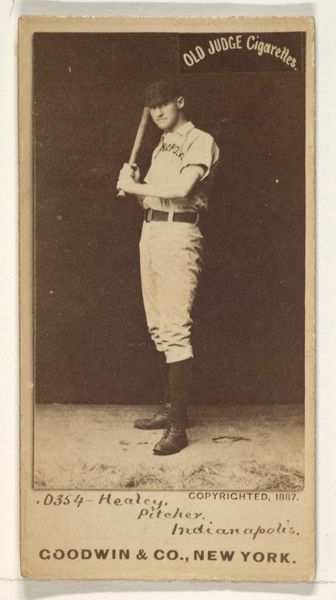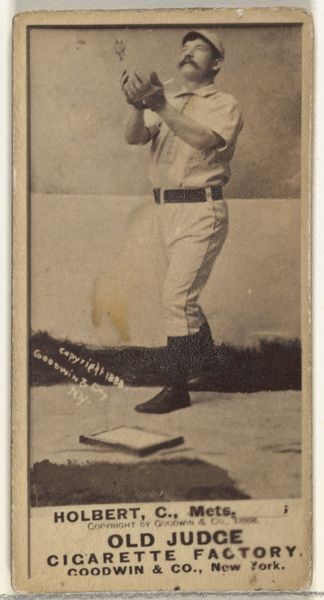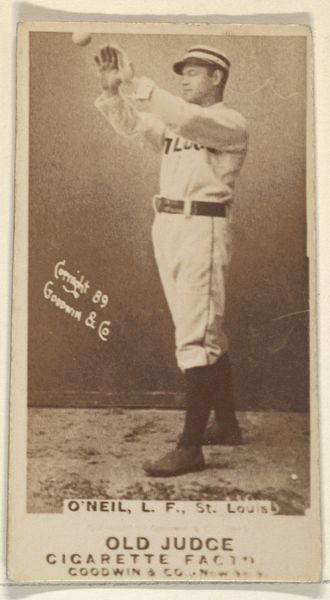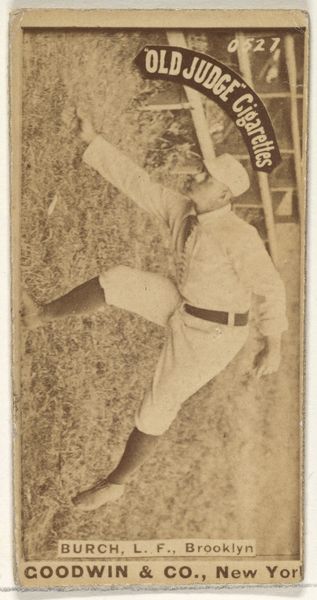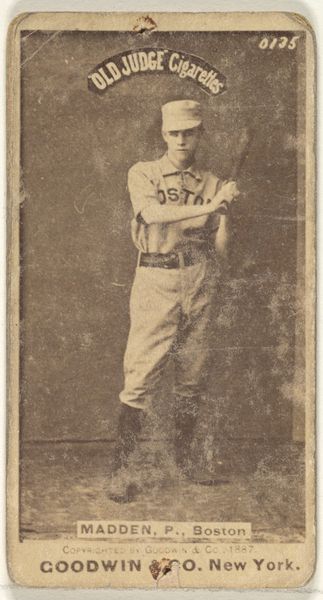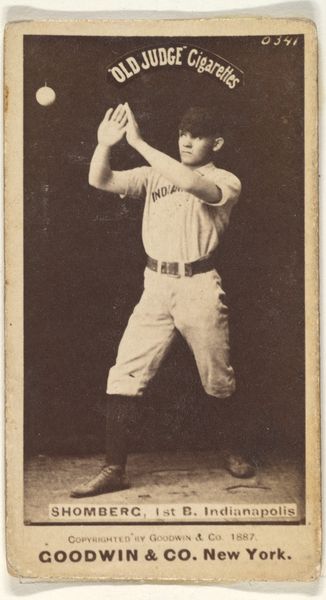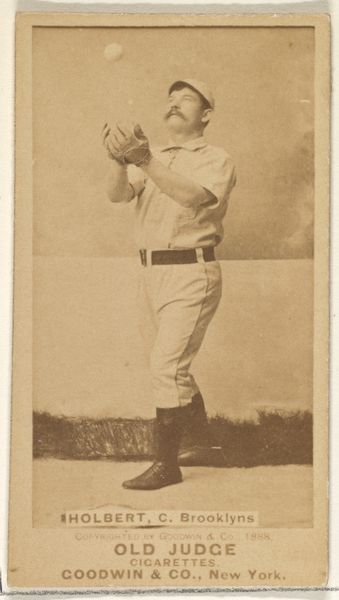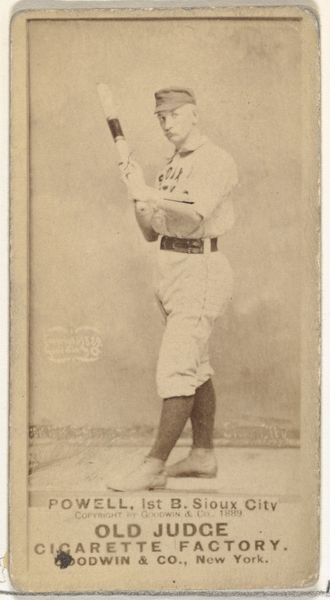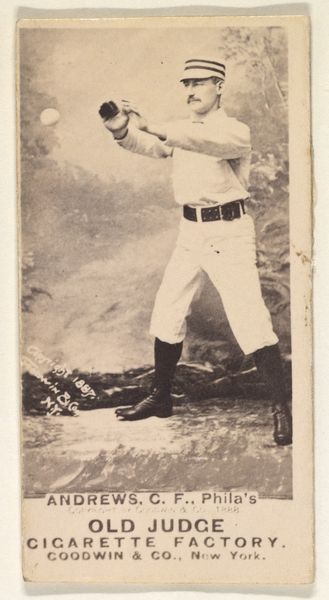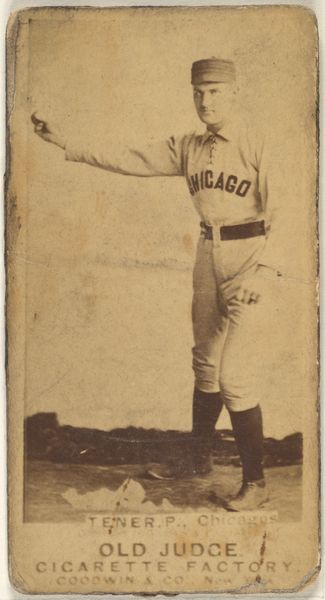
John Montgomery Ward, Captain and Shortstop, New York, from the Old Judge series (N172) for Old Judge Cigarettes 1887
0:00
0:00
print, photography
#
portrait
#
pictorialism
# print
#
photography
#
genre-painting
Dimensions: sheet: 1 3/8 x 2 11/16 in. (3.5 x 6.9 cm)
Copyright: Public Domain
Editor: Here we have a baseball card, dating to 1887, featuring John Montgomery Ward. It’s a photographic print, part of the "Old Judge Cigarettes" series by Goodwin & Company. It seems odd to use images to sell cigarettes, what am I missing here? Curator: You’re right to question that. These cards weren’t simply adverts. Consider the industrial process. Advances in printing, photography, and cigarette manufacturing converged, creating a new form of consumer culture. The cards offered visual entertainment and a sense of collectibility, becoming integral to the consumption of cigarettes. It highlights how the commodity itself becomes less central, shifting focus to lifestyle. Editor: So, it’s less about tobacco and more about…status? How did this image find its way into a museum, anyway? Curator: Exactly. As for the museum's interest, it is less about the athlete or even sport, per se, but rather, the tangible residue of capitalism: the commodification of leisure and celebrity. The mass production of these cards speaks to the industrial processes reshaping society at the time. Moreover, as photographic print, it challenges boundaries of “art,” as the everyday is thrust into spaces of high culture. Does viewing the work from this perspective reshape your understanding? Editor: Definitely! I never thought about how the production and distribution of something like a baseball card could be so revealing. Curator: Considering materiality—the photograph itself, the paper it’s printed on, even the ink used—unravels a whole social and economic web. We are forced to reconsider what defines "art" itself when an item mass produced for profit finds its way into institutional collections. Editor: So, it's not just a picture of a baseball player. It's a record of industrial processes, cultural values, and even how we define art! Thank you for offering me such an important background.
Comments
No comments
Be the first to comment and join the conversation on the ultimate creative platform.
